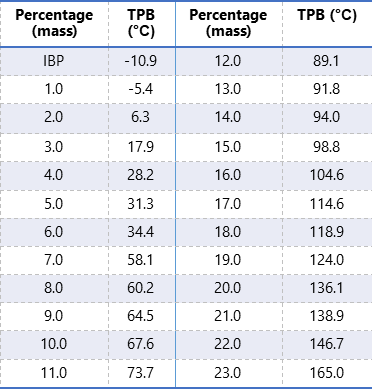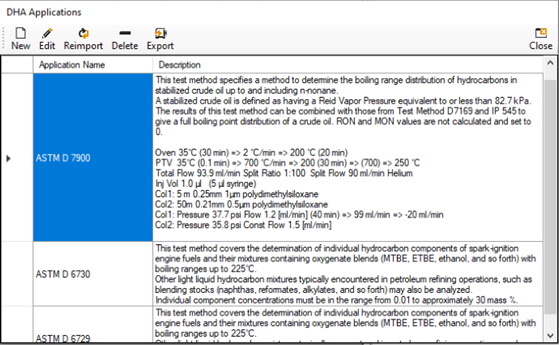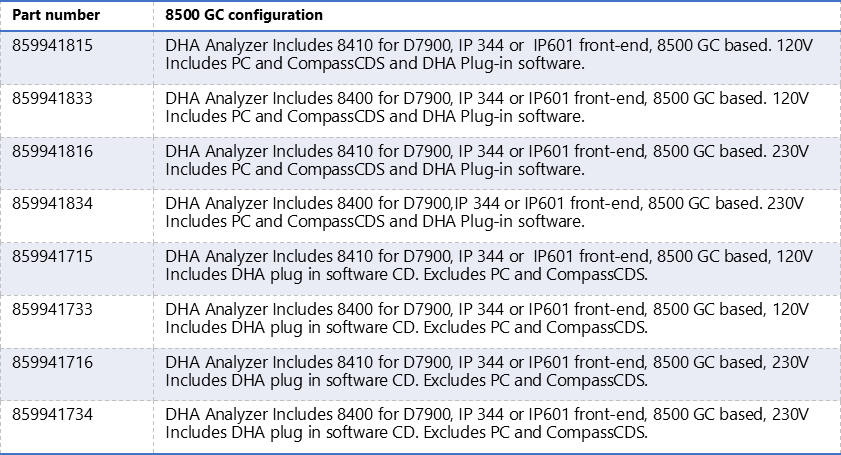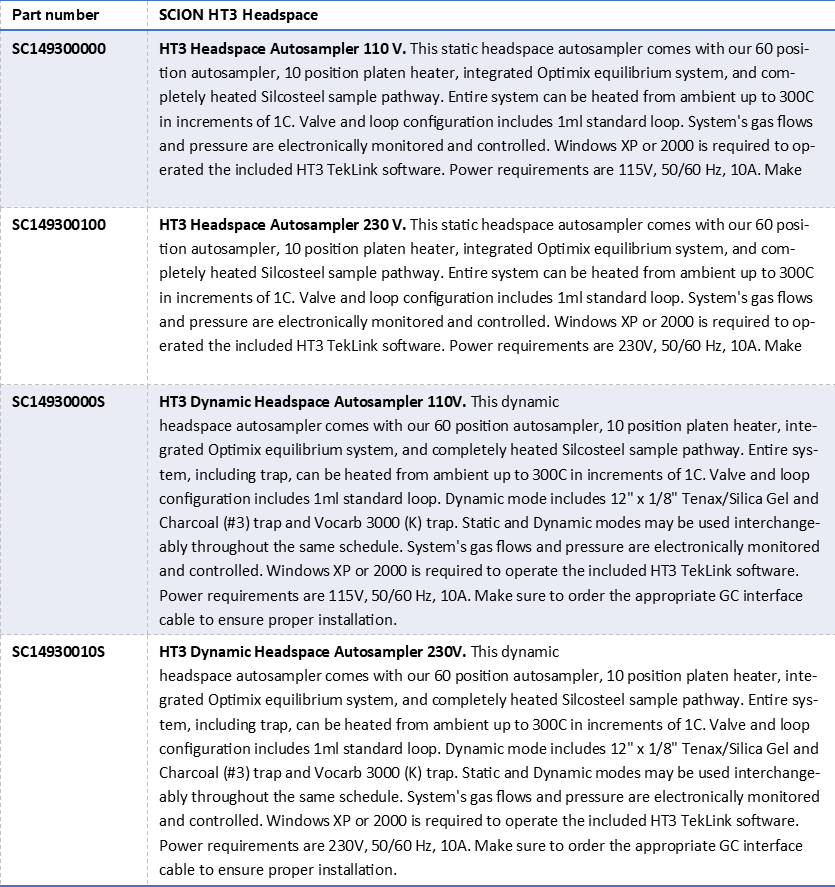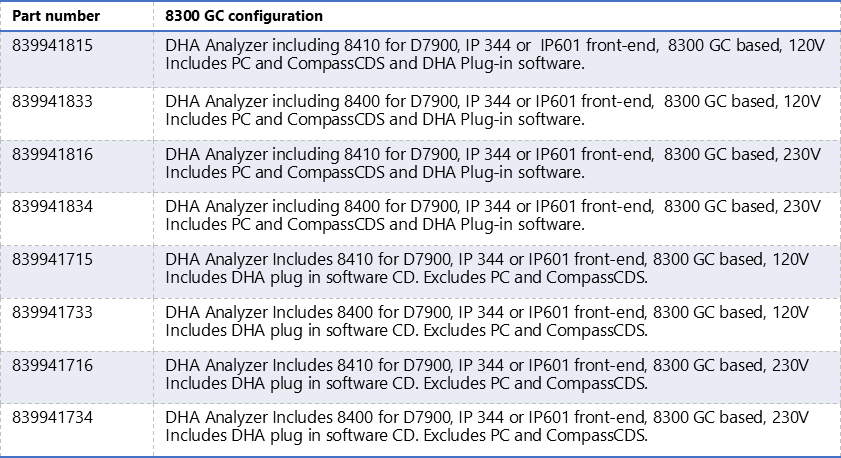Determination of Light Hydrocarbons in Stabilised Crude Oils - Gas Chromatography Method
INTRODUCTION
SCION Instruments offers the solution for detailed hydrocarbon analysis (DHA) of stabilized crudes.
Detailed hydrocarbon analysis provides the boiling point distribution of light hydrocarbons who are present in stabilized crude oils. (A stabilized crude oil is defined as having a Reid Vapor pressure equivalent to or less than 82.7 kPa) A boiling point distribution of these compounds is a frequently used parameter to monitor refining operations.
IP601 describes a standardized method for the determination of light hydrocarbons in stabilised crude oils up to and including n-nonane(C9). IP601 is issued under the fixed designation of ASTM D7900. For a full range of boiling point distribution of crude oils (>n-C9) this method can be combined with standardized method IP545 or ASTM D7169.
This application is applicable on the SCION Instruments 4X6 and the new 8X00 GC-platform, shown in Figure 1, equipped with the 8400PRO autosampler.
Table 1 is showing the analytical conditions of the GC method.
 Figure 1. SCION Instruments 8300 and 8500 GC platform equipped with the 8400PRO autosampler.
Figure 1. SCION Instruments 8300 and 8500 GC platform equipped with the 8400PRO autosampler.
Table 1. Analytical conditions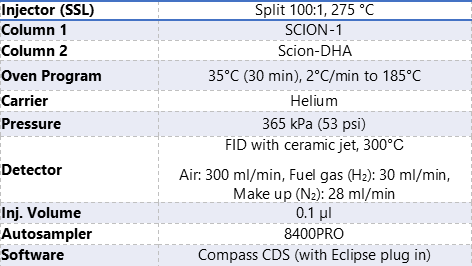
RESULTS AND DISCUSSION
Standardized method IP601 determines the boiling point range distribution of hydrocarbons in stabilized crude oil up to n-nonane (n-C9). As mentioned earlier, a full range boiling point distribution of a crude oil is possible to measure in association with standardized method IP545 or ASTM D7169. These methods are perfectly capable to determine a hydrocarbons in crude oils, however the lighter hydrocarbons in these methods are showing more significant errors. IP601 is specially developed to determine the boiling point distribution of the front end more accurately without the interference imposed by the diluent solvent CS2.
The Eclipse software plug in makes it easily to merge these 2 methods for a reliable full boiling range distribution for the analysed crude.
Repeatability of the system and method is checked by analysing consecutively 6 times the reference calibration mixture of n-paraffins. Table 2 shows the repeatability results of the DHA IP601 analyzer. The analyzer is capable of achieving excellent results with an RSD below 1% for all components.
A critical point of attention during this analysis is the peak skewness ratio of the hexane peak at 5% peak height. A good peak skewness ratio shall be between 1 and 4, according to the specification mentioned in IP601. The skewness of the hexane peak shown in figure 2 has a good ratio of 2.33
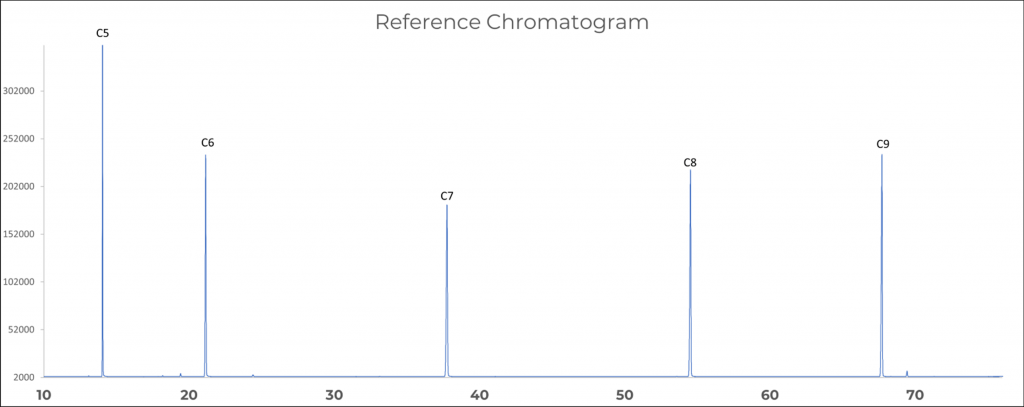 Figure 2: Example chromatogram of the calibration mixture (reference C5-C9)
Figure 2: Example chromatogram of the calibration mixture (reference C5-C9)
Table 2. Repeatability of 5 consecutive injections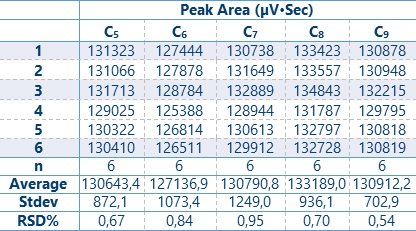
A reference calibration mixture C5-C9 is injected on the system for identification, see figure 2.
The identification of compounds is based on the Kovats index, generated by the Eclipse software plug in. The usage of this index has the advantage that it only depends on 2 psychical properties, in comparison with retention time who depends on 6 physical properties.
The calculated indices are compared with known data in the database and the rest of the peaks are assigned accordingly. Based on this standard, the composition of the crude oil front-end can be identified and the boiling point distribution can be calculated.
A crude oil is injected on the system as an unknown sample. Figure 3 shows the chromatogram of the crude oil. In the chromatogram a select group of compounds are named. With the Eclipse software plug in all components are successfully identified.
Table 3 shows the group report of the crude oil in mass (%). Based on the mass report and internal standard, a boiling point distribution was made, shown in table 4.
A critical point of attention during this analysis is the resolution between the hexane peak and 1-hexene peak (internal standard) a good resolution shall be at least 2 listed in the IP601. The resolution in figure 3 between the peaks of interest is 2,33.
If desired the data from table 4 can be merged with method ASTM D7169 (or IP545) for the total boiling point distribution of the crude oil. SCION application note AN088 will give further information of the merge of methods IP545(or ASTM D7169) and IP601 (or D7900) to give this full boiling point distribution.
Table 3. Group report in mass% of the crude oil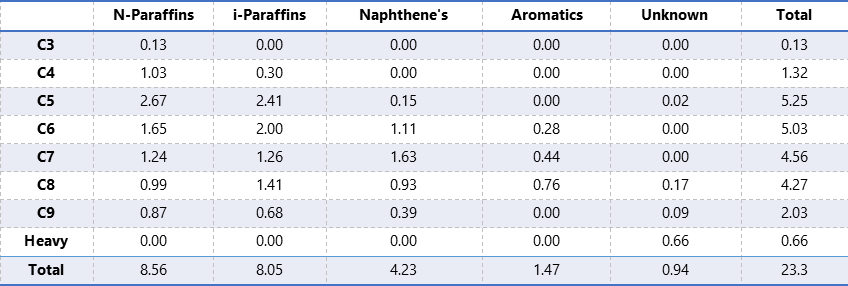
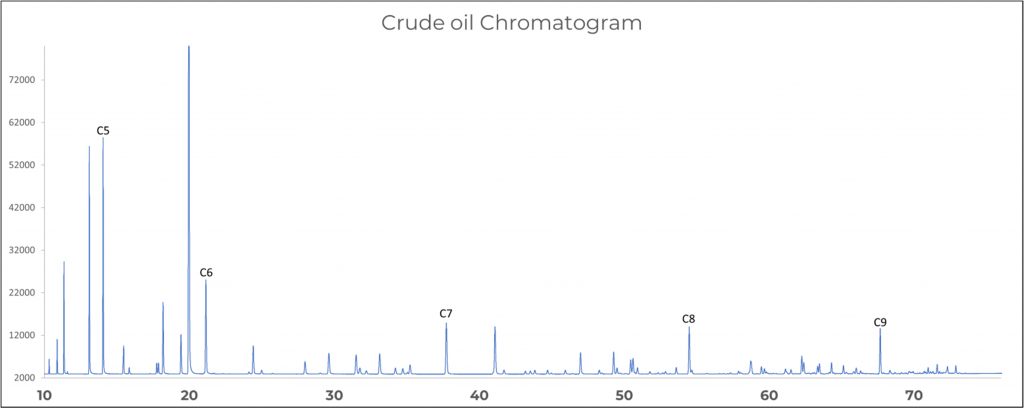 Figure 3: Example chromatogram of crude oil with 1-hexene as internal standard.
Figure 3: Example chromatogram of crude oil with 1-hexene as internal standard.
Table 4. Boiling point distribution report of the crude oil
Figure 4 shows an example of the merged crude oils distribution report in Eclipse. The front end boiling point distribution (<151°C) is based on the DHA IP601 data and is shown in blue. The back end of the crude boiling point distribution(>151°C) is based on standard method IP545 and is shown in black. Figure 5 shows an example of how the chromatogram looks like in the Eclipse plug in software, and the available standardized methods to select.

Figure 4: Example of a merged crude oil distribution report in Eclipse.
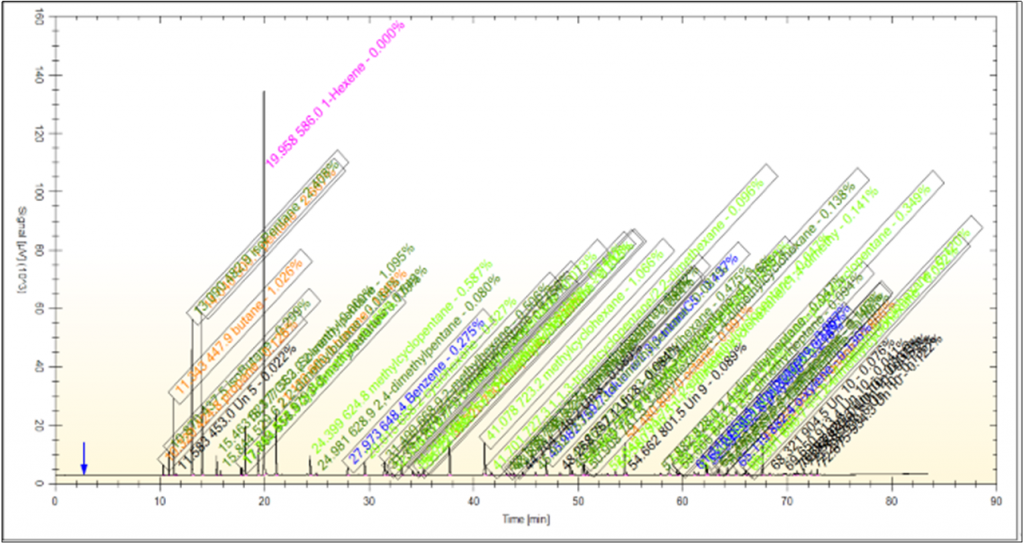
Figure 5: Chromatogram of a crude oil sample using the Compass Eclipse plug in.
The Compass CDS Eclipse plug in is used for analysing the data. IP601 is related to method ASTM D7900, the obtained results are calculated in Eclipse according to ASTM D7900. The plug in is an addition to the basic Compass CDS and this will provide all the tools to calculate the necessary data.
CONCLUSION
The SCION 8X00-GC analyzer is perfectly capable of analysing the boiling point distribution of the crude oil front end in compliance with IP601. The analyzer easily achieves the specifications mentioned in the standardized method.
If a full boiling point distribution is desired it is possible to merge this method with method IP545.
The equipment of the 8X00-GC analyzer is pre determined. Ordering information can be found on the next page. For customisation please contact your local sales representative.
Although the 4X6-GC series is not shown in this application note, it is possible to perform this analysis on the SCION Instruments 4X6 GC series.
ORDER INFORMATION
If you would like to find out more about the 8X00 GC Series and the best instrument for your laboratory, contact our sales team who will be happy to speak with you.
Download the Application Note
Download our full Application Note: Determination of Light Hydrocarbons in Stabilised Crude Oils – Gas Chromatography Method.
Keep in Touch
If you wish to keep up to date with SCION Instruments latest research and articles, follow us on social media and sign up to our newsletter below

